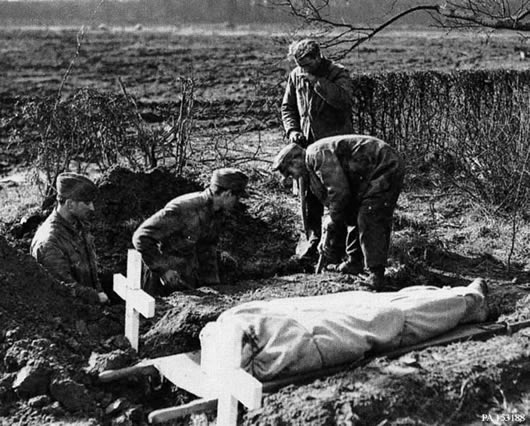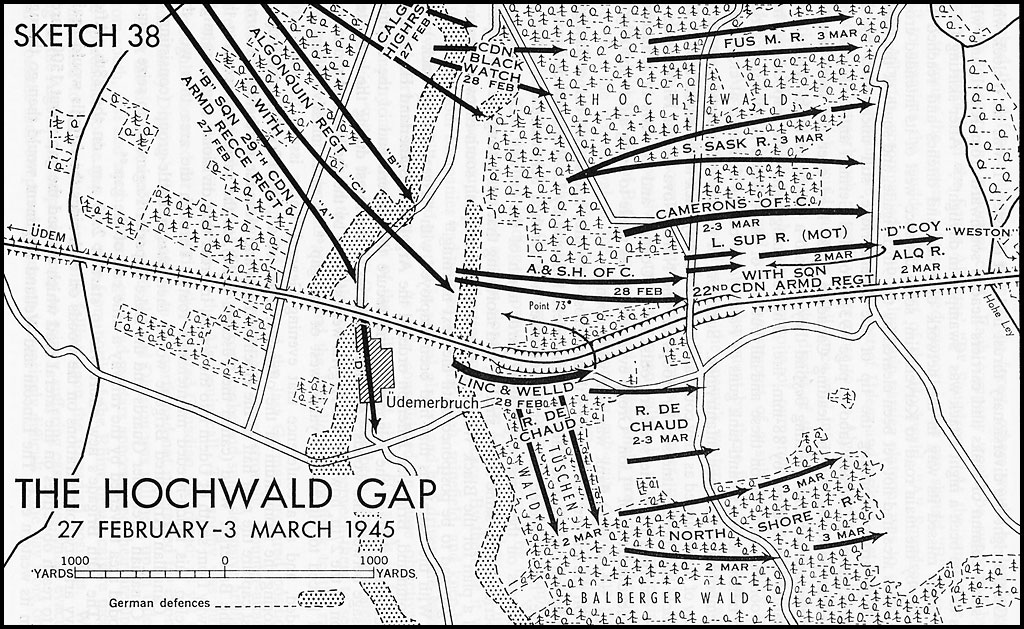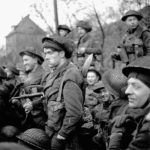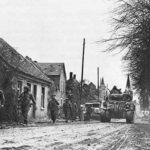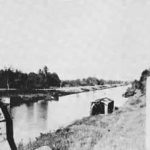The Lincoln and Welland Regiment saw no action on the 27th of February, Day Two of OPERATION BLOCKBUSTER, although it suffered 11 casualties from “light mortaring.” The unit was now back under the command of the 10th Infantry Brigade, which had just been tasked with the push to the Hochwald Gap.
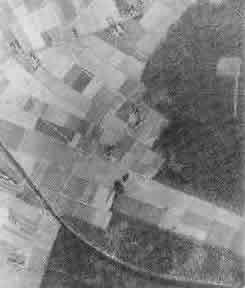
While the Regiment was some distance from the Gap, the Algonquin and South Alberta Regiments fought their way to the mouth of the gap under stiff German resistance and artillery fire which did not come from their front. The German artillery fire came in from over the Rhine River, and was described as “unsettling” to have artillery fire come in over one’s shoulder. Even under this resistance the Canadian Regiments advanced to the forest fringe, at the western edge of the gap. This is where the attack stalled.
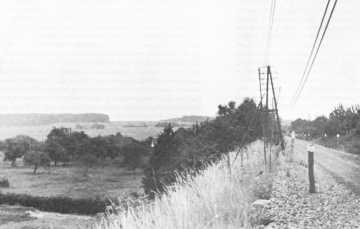
Quickly new orders were given that reorganized the attack. In the plan the Lincoln and Welland Regiment was to advance to the southwestern edge of the gap and capture the railway line and the Tuschen Wald, a small woods to the south of the Hochwald Gap.
Again the soft ground hindered the advance of the tank forces, so the Regiment would have to go in alone. The Regiment made a two prong attack with two companies on either side of the gap to reinforce the Argyll and Sutherland Highlanders in their forward position, and to come to the aid of the Argyll’s B company which was cut off. The remaining two companies would advance along the railway tracks and secure the Regiment’s objectives. The attack went in on the 28th of February at noon.
Major Crummer’s C Company and Capt. Barkman’s B Company lead the attack. Major Crummer recounts the German artillery barrage that responded to their attack:
“We were in the middle of it, standing, trying to push forward. Well, we didn’t stand long. We went to ground damn fast. You just lose everything. You can’t do anything about that… You really hunker down and pray to God that you come out of it all right, because you can`t do anything for anyone, really. You look around and see if anybody is wounded and help them, but I didn`t see anybody. They were all pretty well experienced and had found rat holes or something like that … I think at that point, I was buried a couple of times and got out of it. (The area was] mud, just mud … I remember hearing the shelling and then after a while I didn`t hear anything, but I saw it … I remember the huge explosions all over the damn place. At that time I crawled under a tank to get away from some fire and I could sense the tank settling down in the mud, so I got the hell out of there . . [There was] no cover. Trees are no cover, especially in shelling because you get limbs and you get shrapnel coming down on you … We didn`t get any further than that.”
This artillery barrage was later described by Field-Marshall Montgomery as the heaviest “…volume of fire from enemy weapons… which had been met so far by British troops in the campaign.”
The effects of the barrage are recalled by one Argyll who was in the area: “the black haze that hung over the place after the shelling stopped, and the feeling you had of being absolutely dazed and in a stupor; while a sudden, unreal quiet descended, broken only by the feeble cries of the wounded.”
The Regiments’s war diarist described the incident as: “Hy cas suffered [49 in total] and the attack disorganized, forcing the coys to retire to their dug-in posn [to the west of the gap].”
The Lincoln and Welland Regiment was relieved by the South Saskatchewan Regiment in the early morning of 1 March 1945. They were ordered back to some farm houses in the valley east of Udem. The previous three days of action had cost the Regiment 85 casualties. On March 1st a further 8 soldiers were wounded.
The Regiment stayed in the Udem area for the next five days, resting and regrouping. Further attacks into the gap were mounted and pushed back by the Germans. The Hochwald gap became a deathtrap for many soldiers and tank crews over the next few days.
An account by the German commander in the Hochwald Gap spoke out in the years after the war. His account was one of astonishment that the Canadian’s did not attack across the whole front but concentrated their attacks in the Hochwald Gap area. This is where he concentrated his defenses. He stated that if the Canadian’s would have attacked in more than one place the lines German lines would have crumbled sooner.
The Hochwald gap was not crossed until March 2nd, when the Lake Superior Regiment made a successful, but very costly, dash through the gap, and secured the western boundaries of the forest.
